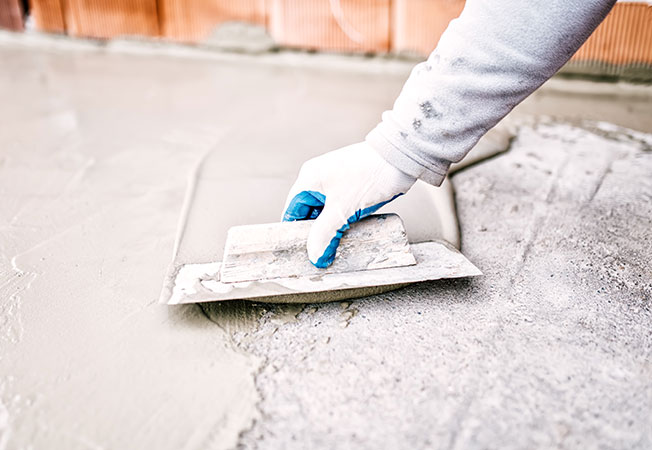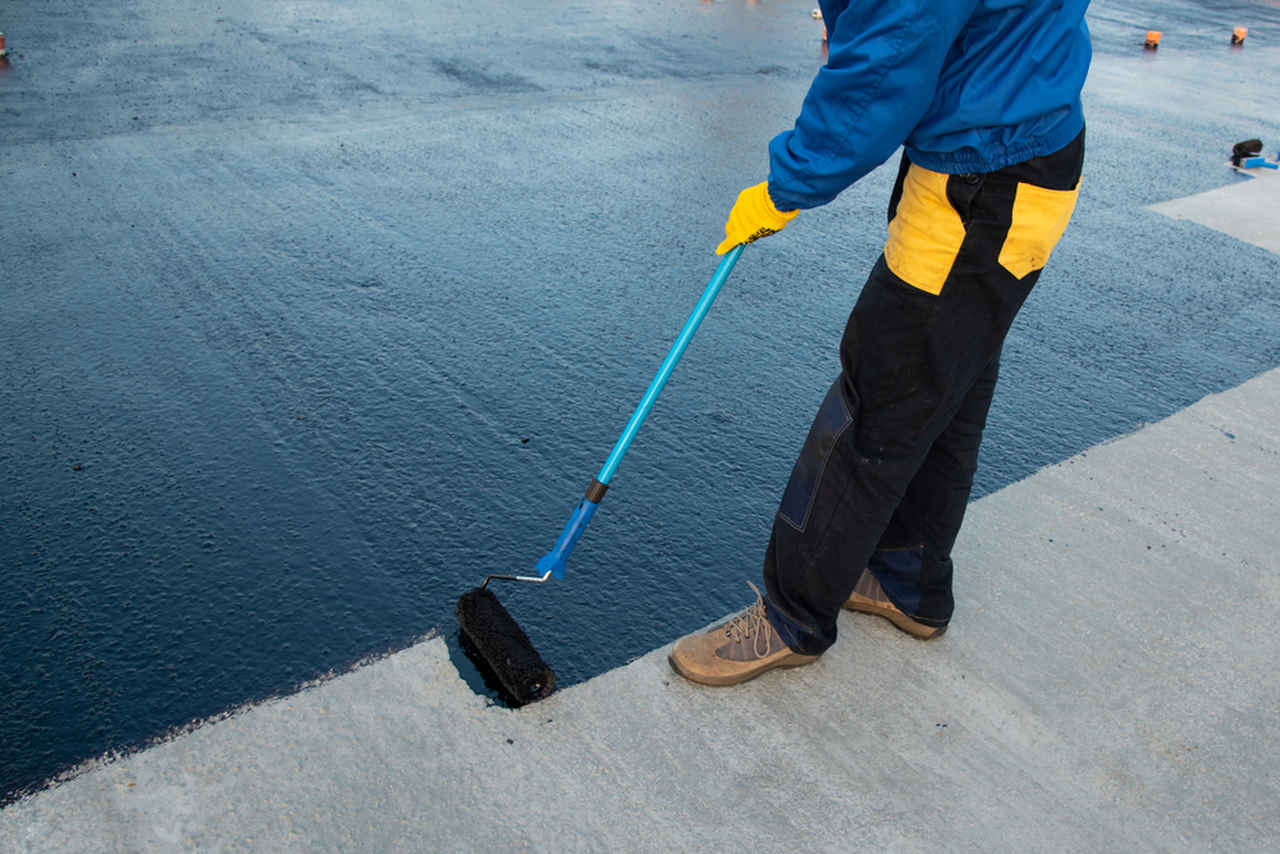Basement waterproofing Omaha: Proven Methods for Lasting Results
Wiki Article
Exactly How Waterproofing Works: A Detailed Consider Methods and Technologies
Waterproofing is essential for shielding structures from moisture-related damage. It entails various strategies and technologies that produce obstacles against water breach. Conventional approaches, such as compacted clay, exist side-by-side with contemporary developments like liquid-applied membrane layers. Recognizing the subtleties of these techniques is crucial for efficient application. Nevertheless, the efficiency of any waterproofing option hinges not only on the techniques made use of yet likewise on continuous maintenance and evaluation. What are the crucial elements that influence long-lasting performance?Recognizing the Fundamentals of Waterproofing
Waterproofing is a necessary process that shields structures from water breach, which can result in substantial damage in time. This technique includes the application of numerous products and strategies designed to develop an obstacle versus dampness. The key objective is to prevent water from penetrating surface areas, which can cause degeneration, mold and mildew development, and architectural instability.Various aspects affect the option of waterproofing approach, consisting of the sort of framework, its location, and environmental problems. Understanding the physics of water activity and the properties of different products is essential in picking a reliable waterproofing solution.Effective waterproofing not just safeguards buildings however likewise boosts their durability and stability. Usually, it is integrated into the style stage of building and construction to ensure thorough protection. As understanding of water-related problems expands, the relevance of recognizing waterproofing principles comes to be significantly clear to designers, contractors, and homeowner alike.Conventional Waterproofing Approaches
Conventional waterproofing approaches have actually been made use of for centuries, depending on time-tested techniques and products to protect frameworks from water damage. Among the earliest methods involves making use of clay, which, when compacted, creates an all-natural barrier versus wetness. Additionally, asphalt, a sticky, black material originated from petroleum, has actually been used for its waterproof buildings, commonly used to roofs and foundations.Another technique includes the application of lime-based plasters, which supply a breathable layer that enables wetness to get away while stopping water ingress. Thatch roofing, a standard technique still seen in some cultures, supplies exceptional waterproofing due to its securely loaded straw layers.Moreover, making use of stone and block has been popular, as these products are inherently immune to water when appropriately installed. On the whole, standard waterproofing methods stress the significance of selecting proper materials and building techniques to boost sturdiness against water invasion.Modern Waterproofing Technologies
Innovations in contemporary waterproofing innovations have actually changed the means structures are safeguarded from water damages. Ingenious strategies such as liquid-applied membrane layers and advanced sealants have actually boosted the effectiveness and versatility of waterproofing services. These innovations permit smooth application, minimizing the risk of leaks and guaranteeing extensive protection over complicated surfaces.Moreover, the combination of wise innovations, such as wetness sensing units and automated tracking systems, allows real-time evaluation of waterproofing performance. This proactive technique promotes prompt maintenance and decreases lasting repair costs.Additionally, advancements in spray-applied coatings provide quick application and superb bond, adapting to numerous substratums while providing robust security. Methods like polymer-modified systems even more boost adaptability and durability, making them appropriate for varied settings. Generally, modern-day waterproofing modern technologies not only reduce water breach yet likewise contribute to the durability and sustainability of structures, noting a substantial change in the sector.Products Used in Waterproofing
The effectiveness of waterproofing options heavily depends on the materials utilized in their application. Different products are utilized to develop barriers versus water ingress, each with one-of-a-kind homes fit for different settings. Typically used products consist of membranes, coatings, and sealants.Liquid-applied membrane layers, commonly made from polyurethane or acrylic, develop a seamless obstacle that adapts to complex surface areas. Sheet membranes, normally built from rubber or thermoplastic, deal resilience and are excellent for larger locations. Additionally, cementitious waterproofing materials, made up of cementitious substances, offer exceptional adhesion and flexibility.Sealants made from silicone or polyurethane are important for joints and seams, making sure comprehensive security. Innovative materials, such as geo-composite membranes, integrate several features, boosting efficiency. Overall, the option of waterproofing materials is vital in accomplishing lasting and effective water resistance, customized to certain job demands and ecological problems.
Typical Applications of Waterproofing
Waterproofing plays an essential function in different fields, guaranteeing the longevity and stability of structures. Usual applications include household options that secure homes, commercial facilities that safeguards companies, and commercial settings that require robust security versus dampness. Comprehending these applications highlights the value of waterproofing in preserving both security and performance across various settings.Residential Waterproofing Solutions
Many property owners encounter obstacles with dampness breach, making effective residential waterproofing services crucial. Different techniques exist to resolve this problem, including exterior and interior waterproofing systems. Inside remedies frequently involve the application of sealants and coatings to basement walls, which help protect against water seepage. Exterior approaches normally consist of the installation of drain systems and waterproof membranes that divert water away from the foundation.Additionally, home owners may consider sump pumps to get rid of water build-up and dehumidifiers to regulate humidity degrees. Appropriate grading and the use of seamless gutters likewise play a vital function in taking care of water circulation around the home. By carrying out these techniques, home owners can substantially decrease the threat of water damage and mold and mildew growth, making certain a dry and secure living environment.
Commercial Infrastructure Protection
Effective waterproofing remedies play a critical duty in the defense of business infrastructure. French drain installation Omaha. These methods are crucial for securing buildings, auto parking structures, and bridges from water damages, which can compromise architectural integrity and lead to costly repair services. Usual applications consist of the installment of membranes, finishes, and sealants that create barriers versus wetness seepage. Locations such as basements, roofing systems, and exterior wall surfaces are often prioritized to guarantee long life and durability. In addition, waterproofing systems can improve energy performance by avoiding water-related concerns that might cause mold development and deterioration. By implementing durable waterproofing steps, residential or commercial use this link property owners can shield their investments and maintain functional efficiency, eventually contributing to the total sustainability of industrial centersIndustrial Applications Introduction
While different markets encounter unique difficulties, the demand for trustworthy waterproofing remedies continues to be a consistent in industrial applications. Industries such as manufacturing, building and construction, and energy commonly come across atmospheres where moisture direct exposure can endanger architectural honesty and functional effectiveness. In producing facilities, waterproofing is crucial for safeguarding machinery and products from water damage. In building, it safeguards foundations and cellars versus groundwater infiltration. The energy sector counts on waterproofing for the protection of equipment in hydroelectric plants and overseas frameworks. Furthermore, food processing sectors use waterproofing to Visit This Link guarantee hygiene and compliance with safety and security requirements. In general, efficient waterproofing solutions are essential for boosting toughness, security, and performance throughout different commercial setups.
Maintenance and Long Life of Waterproofing Solutions
Waterproofing services are created to provide lasting security against moisture invasion, normal upkeep is vital to assure their efficiency and long life. Routine assessments play a significant function in identifying potential concerns such as cracks, peeling off, or signs of water damages. Addressing these issues without delay can protect against additional deterioration and expensive repairs.Additionally, cleansing the surface of waterproof areas helps remove dust and particles that can compromise the stability of the waterproofing obstacle. It's also a good idea to reapply protective finishes or sealers as recommended by producers to keep ideal performance. Ecological factors, such as UV direct exposure and severe weather, can influence the lifespan of waterproofing materials, making routine evaluation importantOften Asked Inquiries
Can Waterproofing Be Applied in Winter?
The concern of applying waterproofing in winter increases problems about adhesion and curing. Many items might not do at their ideal in reduced temperatures, requiring careful selection and consideration of specific standards for effective application.The Length Of Time Does Waterproofing Generally Last?
The duration of waterproofing effectiveness differs based upon materials and environmental elements. Typically, it can last from five to 10 years, however routine maintenance and evaluations are important to ensure peak performance and durability.Is Do It Yourself Waterproofing Effective and Safe?
The efficiency and safety and security of DIY waterproofing depend on numerous elements, including material top quality and application method. While some individuals achieve adequate results, others may come across concerns that jeopardize lasting defense and structural integrity.What Are the Signs of Failing Waterproofing?
Signs of falling short waterproofing consist of visible waterproof under deck storage water discolorations, peeling off paint, mold development, mildewy odors, and dampness in wall surfaces or ceilings - Water Solutions Omaha. These indications suggest compromised obstacles, requiring prompt inspection and potential remediation to avoid further damageJust how Do I Select the Right Waterproofing Service Provider?

Report this wiki page